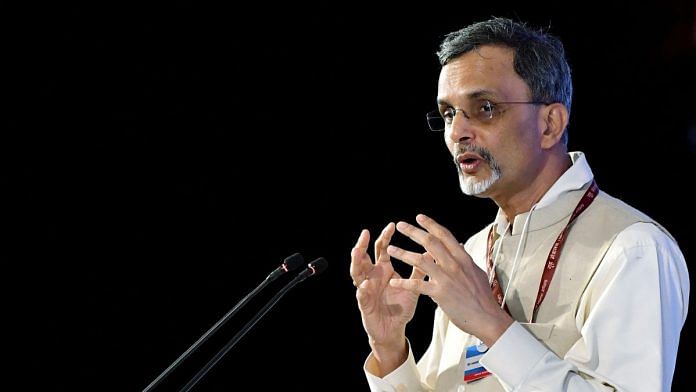New Delhi: Signs from the first three quarters of financial year 2023-24 pointed towards an 8 percent economic growth rate for the full year, Chief Economic Advisor V. Anantha Nageswaran said Wednesday.
The World Bank, too, said Wednesday that if global economic conditions become more benign, then India could achieve 8 percent growth in the future as well. However, it did point out that this brisk growth rate would risk inflation rising in the economy, since it would exceed India’s “potential” growth rate of 6-6.5 percent.
“The IMF has projected a growth rate of 7.8 percent for FY24. But if you look at the trajectory of growth in the first three quarters, the possibility that the growth rate touches 8 per cent is quite high,” Nageswaran said while speaking at an event organised by the National Council of Applied Economic Research (NCAER).
The IMF has estimated growth of 6.8 percent for the ongoing financial year 2024-25, but the Reserve Bank of India pegs this number at 7 percent.
“If that materialises, it will be the fourth consecutive year from FY22 that the economy will have grown at 7 per cent or more,” Nageswaran added.
In April, the World Bank upgraded its growth estimate for India in 2024-25 to 6.6 percent from its earlier estimate of 6.4 percent.
Risks of above potential growth
Also speaking at the NCAER event, World Bank country director Auguste Tano Kouamé said this figure could be upgraded once again in the World Bank’s next estimate.
“Our forecast will be updated pretty soon for FY25 and it is likely to be upgraded because the signs are quite good for future growth for India,” Kouamé said.
He added if the world economic conditions become more conducive to growth, this could lift India’s growth to 8 percent.
“In this very challenging global environment, if India can grow at 6.5-7 percent, what will India’s growth be when the world economy is more benign and the global environment is more conducive? Can India reach 8 percent? My hypothesis is yes,” Kouamé said.
However, he warned that an 8 percent growth rate in India likely far exceeded its “potential” growth rate, which is the highest rate achievable without putting stress on other macroeconomic indicators like inflation.
“At the moment, we don’t have agreement on India’s real potential growth,” Kouamé said. “Ours at the World Bank is 6-6.5 percent. But if that’s the case, if it remains at that level, if and when India grows at 8 percent, it will create inflationary pressures.”
“If you grow at potential, it’s good. But if you grow well above potential, it may sound like you are doing well, but it’s not very good from the macroeconomic point of view,” he added.
There are a number of things India can do to increase its potential growth rate, Kouamé said. These include increasing private sector investment, and utilising current assets like land and labour — especially the female labour force — more effectively. Overall, productivity in the Indian economy must be increased, he said.
Increased resilience of Indian economy
Poonam Gupta, director-general of NCAER, said the Indian economy has displayed increasing resilience to multiple factors that earlier used to impact growth.
“When it comes to India’s increased resilience to different kinds of shocks, the analysis that we have done shows that typical shocks that used to impact India’s GDP growth in the past now matter less,” she said.
For example, she said that political stability in the recent past has meant that policy has also has been more stable and predictable.
“The fact that now elections both at the central level and in the states have been decisive, and there have been very few mid-term changes in the governments, and there is more certainty on the policy direction, means that political or policy risks have become much less than in the past,” she said.
Gupta added that a sharp increase in the international price of oil does not impact the Indian economy as much as it used to. This strength, she said, was besides the fact that oil prices are now showing a moderation, which bodes well for the Indian economy.
She said NCAER’s analysis showed that India’s agriculture has become a little more decoupled than in the past from the quantity or quality of rainfall.
“Global risk aversion resulting in the abrupt outflow of capital from emerging markets also matters less for India,” Gupta said. “First, India now holds a very large level of reserves and second, it exhibits a certain kind of maturity to be able to respond to such shocks.”
She added that India’s financial sector was much more stable, with non-performing assets having reduced significantly, and the sector showing very fast credit growth along with good asset quality.
(Edited by Tikli Basu)
Also read: ‘Glorification of violence’ — India on depiction of Modi as a prisoner at Sikh procession in Canada

